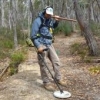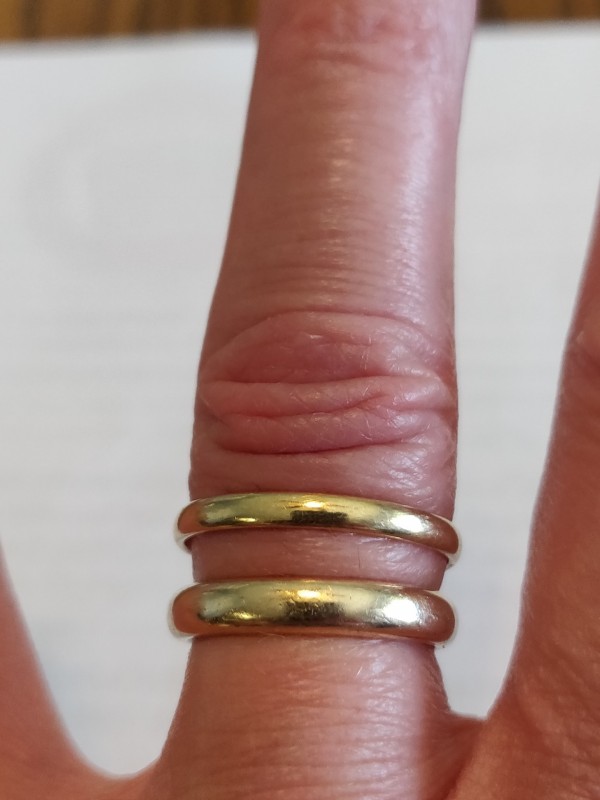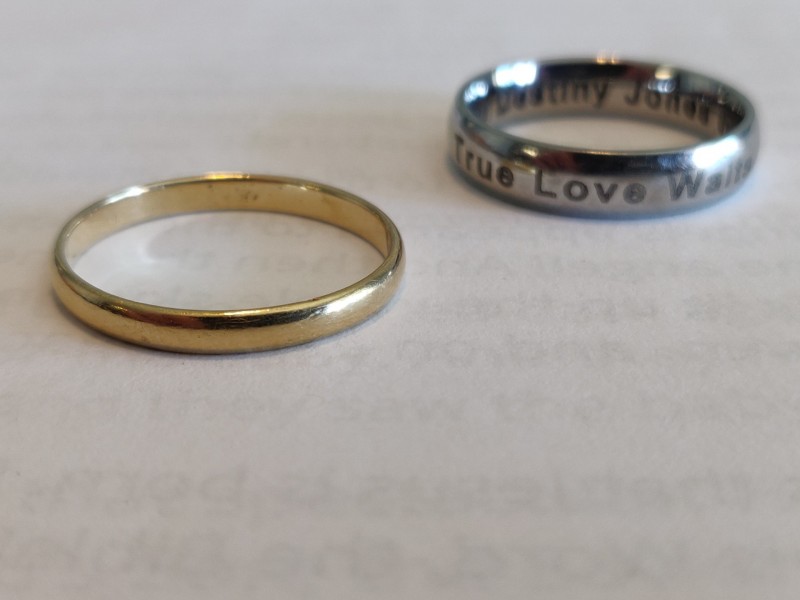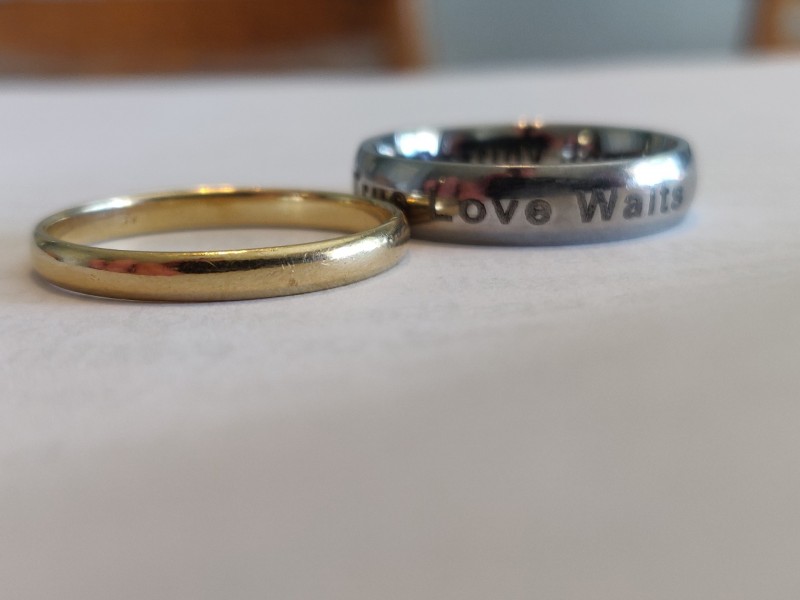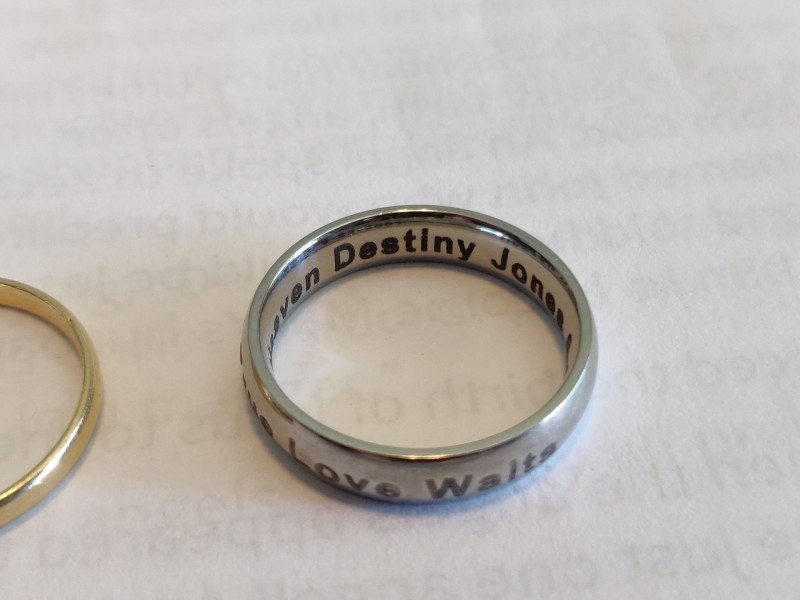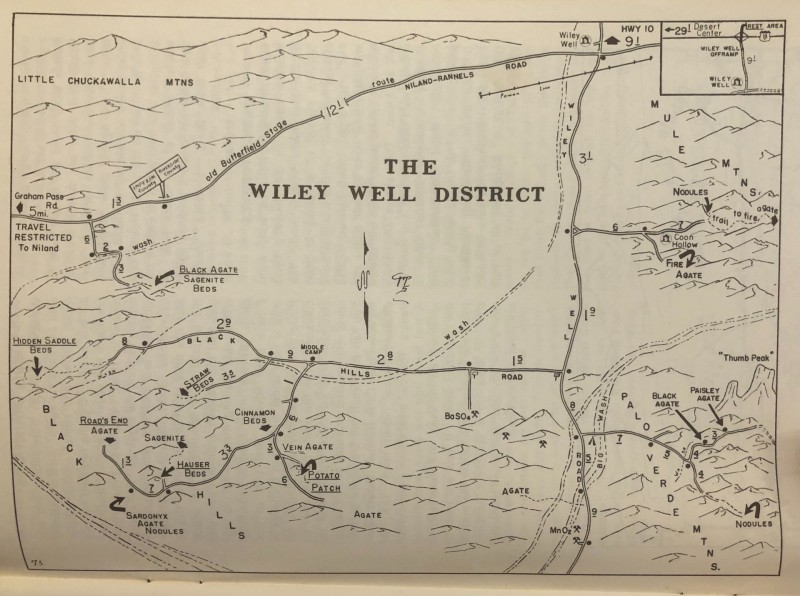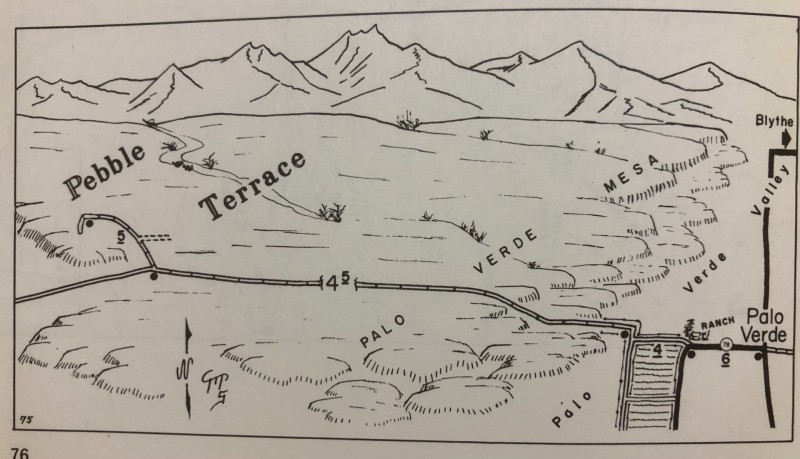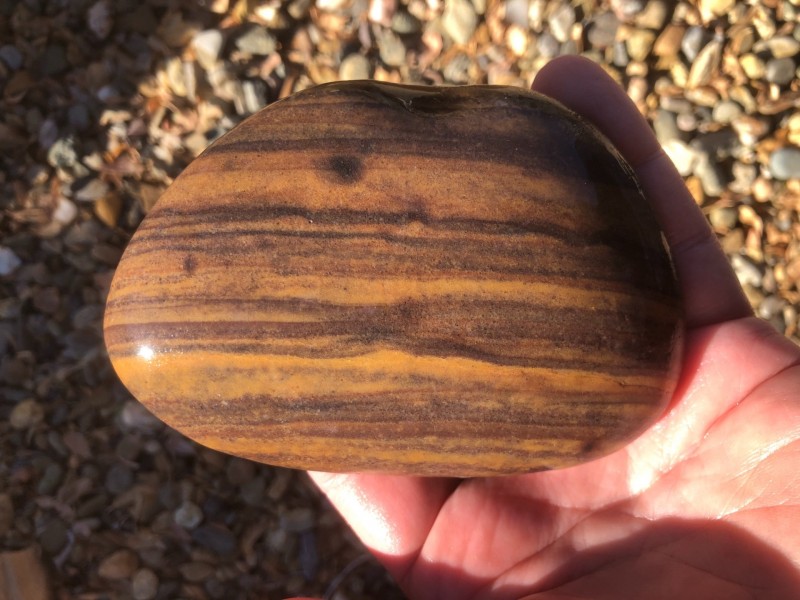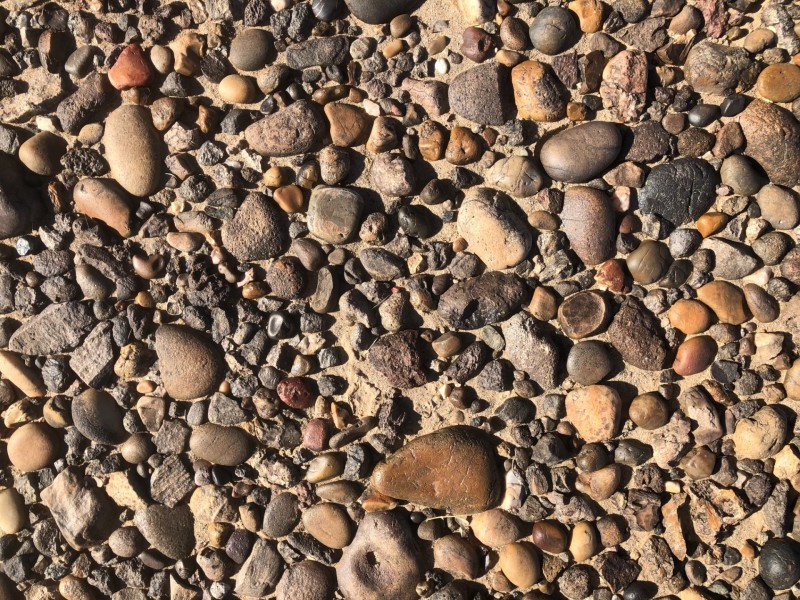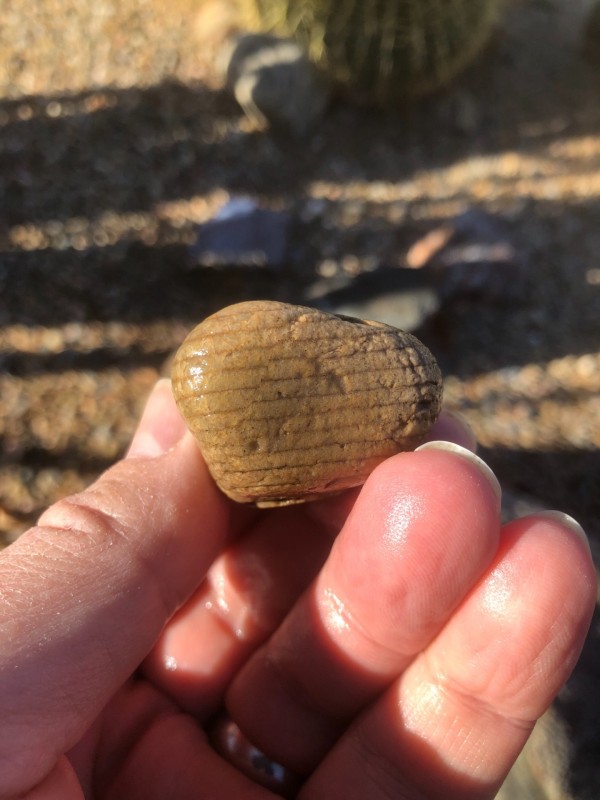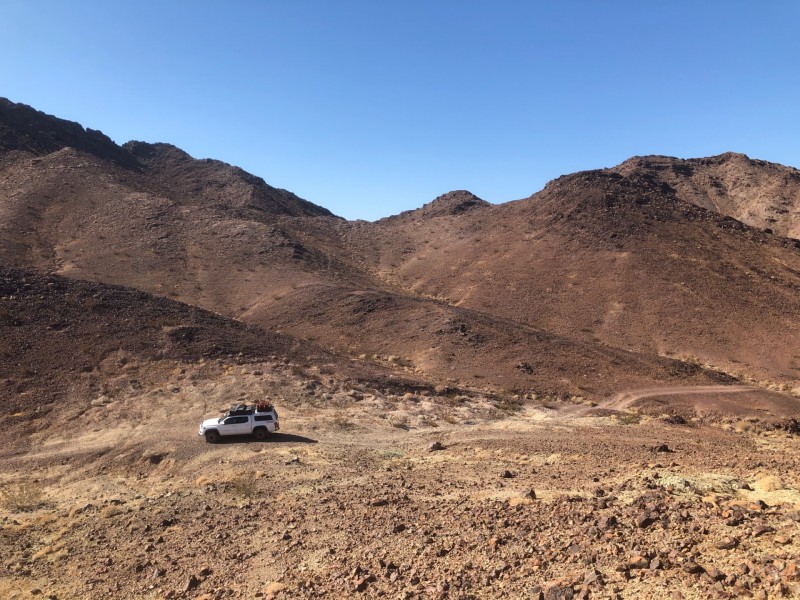Leaderboard
Popular Content
Showing content with the highest reputation on 01/07/2021 in all areas
-
We took a day off from detecting and went out rockhounding for a day and came across these old workings , the old timers dug some deep cuts across the toes off some of the hills that ran down into the wash and found a couple small drift holes. the holes are about 10 foot deep with a couple small drift holes in each and the longest cut was around 50 to 60 yards long. there were dry washing holes that were just as deep and some were over 12 foot wide, some serious digging going on out there .15 points
-
11 points
-
6 points
-
Did a quick hunt the other day and dug only coins. This has to do with the "training" that Canadian coins have given me. In a way they are a "median" target--part non-ferrous and part steel. What this means is that they have characteristics of both. So with a clean processing pulse like the AQ--you have a narrow signal (imagine a tube carrying the response up) with some wide or maybe irregular characteristics. Point being that they make good "trainers" teaching you to look for even poor examples of a narrow response. Then when you hear some clean gold...unmistakable. Foils and tabs will do the same thing but are still not as good of conductors. If you are in soft material focussing on deep heavy targets this is a very strong tool for ID'ing responses with the AQ. Very glad that caps sound wide on this machine. With a pulse that processes at this level the principle of "carry" (see illustration) is even more important. With some VLFs--Hieneken caps are similar to Canadian coins--steel--but with lots of aluminum in there too--right on the border--and for this reason a good teaching tool. cjc4 points
-
Yep, I pretty much have free rein there. I've panned a couple of times with a cheap off brand plastic pan and a cone shaped stainless steel batea. I haven't found anything, but I'm pretty inexperienced with panning. I've spent lots of time researching, but don't have much experience. My lower back also starts acting up after leaning over a few slow/unskilled panning attempts. The creek is also fairly skinny, maybe 2-3ft across and runs straight without any inner bends to target. There's a few spots I tried to remove gravels to get to bedrock, but I only hit the top of buried boulders. Western NC. I live near Hendersonville but the 10ac property is in Burnsville. I'm definitely flirting with the idea of heading out west eventually. I actually have family in Arizona. Why can't you imagine nugget detecting out east? Is it the combination of hot ground, thick organic layers, and lower quantity of nuggets available? Thanks for the lead. I'm definitely a proponent of doing homework. I've been researching prospecting for years to decide a method of attack to invest in. Detectors seem more versatile than dredges. More portable and can be used many places dredges can't. I'm also looking into scuba gear for underwater sniping. I can do that in the national forests, just can't sluice or dredge. I thought because of the high mineralization, hot rocks, and deep layer of humus and uneven terrain I would need the depth of a PI. I was also worried that the equinox might be a little complicated for an amateur like me, but maybe it would be worth it to spend more time learning on such a machine. The 10 acre site probably has some coins/relics, but I'm not expecting much. It is on top of a mountain at the end of a cul de sac next to logging land. I doubt there was much traffic up there in the old days except maybe the alleged gold mine further down the mountain. But to be fair, I shouldn't expect many nuggets either if I haven't found any yet. I'm not expecting to find much on this property. But it's the only place relatively close that I have full access to for now, so I was thinking it would be a good spot to cut my teeth. There's actually a small public area at Ray Mine that allows detecting. But I assume it has been picked clean since there are no public alternatives in the area that I know of. There have been some pretty large (12+ pound) nuggets found a couple hours away, so you never know. I might stumble onto a nice vein. I assume a highly skilled user with a low end detector would be more successful than an unskilled user with a high end detector, so I want to get plenty of practice before going on long road trips to camp out at better locations. I have some leads on other private properties nearby which I might be able to use. Just want to learn how to use the detector first before bugging the owners for permission.4 points
-
First out for the year, found a spot that has cuts that are over my head. I know how they got there but best I hold on that for now. One thing for sure targets are every where, on the top shelf, down the slope, and in the bottom. Just have to wait for a better tide so I can hunt the whole bottom and not worry about sliding down the slope. Most targets are shallow. First gold was maybe 12 inch's? Going to be interesting to see how long this spots stays intact-ed. I knew something was up and one reason I took the Excalibur for I had no clue on what I would be walking into. I am debating on taking the 8 inch on the "AQ" next trip. Seems to be no trash at all.... Three hour hunt, 1916 Class Ring and 1929 Class ring. 4 Silvers, which are eaten bad by the brackish waters of the Chesapeake Bay. Water is just dipping into the high 30's, full hunt I was toasty but Need to make some adjustments to my gloves, left glove is like wearing a sock.. No mobility.3 points
-
Every BT headphone does not support Low Latency BT transmission - it has to be supported on both ends - the detector transmitter and the phones themselves. APTX LL the low latency bluetooth standard transmission protocol Minelab has adopted for incorporation into its Equinox and Vanquish detector BT transmitters - is kind of a fading standard. Hasn't really caught on with the general marketplace and manufacturers of BT headphones seem to not be willing to play to licensing fees to incorporate the chipset and firmware in to their products as a result, unfortunately. APTX LL would at least be better than yet another non-cross compatible proprietary wireless/Wi Stream variant. They now have at least 4 proprietary Wi Stream variants, none of which have interchangeable hardware (WM08 for Equinox, WM10 for the CTX 3030, WM 12 for the GPZ 7000, and the Pro Sonic standalone unit - totally ridiculous.) See above. Bose does not support any sort of low latency BT standard protocol, definitely not APTX LL. Low latency is pretty much a necessity for detecting with wireless audio otherwise your coil swing does not sync up with where your coil is when you hear the target audio. It is pretty noticeable with non-low latency bluetooth headphones and pretty annoying. I definitely sympathize. There are BT headphones that I have that would be much preferable to those that I am forced to use that comply with the BT APTX LL standard. I've pretty much switched over to proprietary wireless audio solutions for everything but the Equinox because they allow me to use headphones with optimized audio characteristics for my hearing and comfort.3 points
-
We are wet, wet, wet here, the ground is sodden right the way through so everything is sticky, both the ground and the air, the atmosphere is all over the place because of all the unstable monsoon weather right across the State (just had our first cyclone for the season). Not a good time to be too serious about detecting but I’ve desperately been needing a gold fix. Enter the little NF Zsearch, its the perfect coil for these conditions, I was amazed how quiet it ran in the salty areas even the bad ones that I generally avoid after rain. EMI is also way down compared to other coils so this has also helped at a time when I would usually not bother (OK yes I would, I’m a detecting tragic but it wouldn’t be pleasant 😅 ). First cab off the rank I spied during digging it up just sitting there in the damp clays, a nice plucky little 3/4 gram bit that made a satisfying clunk as I put it in my gold container. These little guys add up. Next one was close by and gave a nice clear hit, actually I got a little bit excited because it low/high’d on me which got me thinking it was a bit bigger than it actually was. I am still learning the channel flipping cross over points of nuggets with this little NF coil, seems it channel flips quite readily on sub gram chunky stuff. That was the end of the session for that day, it took a while to get the sticky red clay washed off my hands and gear.🤐 I got out a few mores times over subsequent days pinging little bits in old favourite spots enjoying the quiet sensitivity of this new little coil. One thing I have noticed though is my swing speed has sped right up because of the lighter weight, something for users to be aware of as that really does the kill depth on larger gold. The smaller coil can be swung faster but you will not see its full depth potential doing that. Nice little Low/High trickster My tally since New Years, not a lot but you got to start somewhere, I’m happy to start the season off slow and leave some in the tank for when the weather is nicer.3 points
-
Nuggets can be a type of rock specimens, and I am not selling them so it is not for financial gain.3 points
-
Funny as I thought you were talking about the Donner party of something when I read the title...nice hunk of gold jewelry you got there and spelling is not one of my strong points but I'll bet the donor of that earring really misses it 😉 strick3 points
-
Just saying the 6000 better have the latest low latency wireless bluetooth capability to any headphones...or i will be upset. Also a clever company would have a screen setting (similar to nox) that has bars /numbers to show signal strength/depth/broadness.. for all the hearing impaired detectorists. Should be a simple for minelab to engineer this. Just feel Minelab could spend more time workshopping/R & D time with some of the best long term gold detectorists3 points
-
3 points
-
My first suggestion is to stick with the stock 11" round for at least the first several months. It's quite good at separation and depth. The 6" round coil is good for very small targets (e.g. tiny gold nuggets) and helps in extreme iron trash locations and around fenceposts, etc. The 12"x15" gives better coverage (think 'wider lawn mower deck'). It's obviously heavier. Works well when coverage is a driver (e.g. dry and wet beach, but not in the water). But back to my first point -- IMO you should hold off getting the auxilliary coils until you've gotten a couple hundred hours (minimum) experience with the stock coil. Learning that will allow you to appreciate the special features of the other two.2 points
-
There is a lot of good books there. I would suggest that you spend a day or two at a known location and see what you be detecting and how your equipment reacts. This will enable you to know what the books are talking about and save you a lot of time learning how to find gold.2 points
-
I have a GMX and that is the last machine i want for coin hunting.The target Id does not work like other machines when things get buried a few inches.You have to be in the mood to dig if you use this machine. Lot of wrap around on the Id.2 points
-
Hi Michael.I will try to get hold of you soon.You can hunt with me and a few of my buddies.What town do you live in ? I live in the Greece/Charlotte area.Maybe we can meet in Durand soon.Look it up. It has a beach and a lot of woods to hunt.I have got 5 silver so far in this short year.Clad Hopper got a AU split band 1924 merc,a 1919-s merc plus a regular merc and a washington quarter.I went out 1 more time then him.I also got a 1940 bird band.All at durand.I use a Nox 800 and so does Clad hopper.2 points
-
Not a book, but this will help you research and pull mining claim data fairly easily. http://www.mylandmatters.org/Maps/ClaimsCa/GetMap2 points
-
April was just a rumor, nothing more. There is no official release date, and frankly I think April is optimistic to the point I’d be betting against it. For all we know Tom Walsh could still just pull the plug in the whole thing. I kind of hated selling my Ltd as it is possible I might not be able to get a “finished version” if one never goes to full production. I think I heard that something like 70 units have been produced so far, but could be wrong about that. I would rate the cooperative information sharing aspect of this “pay to prototype” as a fail. FT locked down the information flow, and people know as little now about what is going on as before this all started. I decided to bail and wait until the company gets it act together. I wish them success in doing so. My thanks to Rick, Alexandre, Willy, Joe, and the other forum members for listening to some of my thoughts about the Impulse.2 points
-
This is true, and as you point out Multi vs Single is debatable at this time, depending on the ground. I think that is simply because Multi-IQ is both in its infancy, and that gold nugget prospecting was last on the list of features considered important on Equinox. In my milder ground Multi-IQ excels. It remains to be seen what Minelab could do with a Multi-IQ designed specifically for prospecting, but I do think it is in the future. As for a solid 6 x 10 coil for Equinox, Minelab can kiss my xxx for purposefully leaving us lacking on that one.2 points
-
My advice would be to get a more versatile and affordable detector. Namely, an Equinox 800 and possibly the 6inch coil for max micro target sensitivity. If there is small gold near the surface, you will find it and that would clue you into whether it makes sense to drop serious coin on a PI. If you don’t find any natural gold, at least you have an excellent coin, relic, and beach machine too. That 10 acre site might not give up nuggets but it could give up relics or coins, perhaps even of the gold variety. GL2 points
-
This picture is 3 weeks old, I 'm waiting for a today update. My grandson discovered metal detecting "for treasure" on tv. He's watched countless videos of how to and getting big finds and then my son told him I used to detect. Next step, using my old Whites spectrum in the back yard....he keeps finding stuff I've missed after 15 yrs of "cleaning it out". This Christmas his parents and I got him a basic set up with all the tools; pin pointer, shovel and belt with a trash bag. I gotta work on his making a smaller hole and leaving no trace But, damn I'm proud of him.1 point
-
Hello all! First of all, I just wanted to publicly say thank you to Steve and the rest of the members on this site. Although this is my first post, I have been using the wealth of information gathered from everyone here for a while now. It's that time of year up here in Alaska where the days are dark and the memory of summer seems like a distant past. To cure my deep seated winter time blues and my sense for adventure, I decided to check out a spot I have been wanting to try for a while now, but let the myriad of summertime activities get in the way. But perhaps the real underlying driving force for this trip was my new highbanker waiting patiently in the garage to process dirt. Whatever the REAL reason, I looked at the forecast and saw a balmy 26 degrees forecasted and knew it was time to shine. So I drove North of Anchorage with my back country cross country skis (say that ten times fast) in tow, looking forward to a day out in the back country. I have found that if my main objective is to get out and enjoy the outdoors with a side chance of pay dirt, I am rarely if ever disappointed. And this day was no different. I arrived and strapped on the skis and my touring sled and set off into the snow. I quickly found out that hauling equipment by skis should be an Olympic event. The powder was easily three feet deep and probably pushing on four, making me earn every "stride". In reality, the snow was so deep and the sled so heavy that my skis weren't gliding at all, but being used more like elongated snowshoes, trudging through the snow. But the temperature was warm and snacks aplenty, so I trotted along the creek ahead encountering open water in places and crossing precarious snow bridges at times in order to make my way along. Just around the moment where I realized that I may be in for more of a workout than I intended, I had arrived. Located a few miles downstream was a section of the creek forced into a ninety degree bend by an outcrop of ancient gold bearing glacial till. During the summer months this "creek" (creek only in name) produces too swift of a current to properly explore this bend. But thanks to mother nature, winter freeze up reduces this section to a little more than a shin deep trickle. (The section of glacial till forcing the creek into a perfect ninety degree bend. The creek erodes alongside this till and prevents any debris from accumulating at the base.) (The creek encountering the glacial till and being turned at a sharp ninety degree angle, causing a major drop in water velocity.) As I considered this to be more of an exploratory trip on skis I had left my waders at home, preventing me from properly getting out in the channel. What I settled for instead was balancing myself on the edge of the ice as close as possible (not recommended) and shoveling a few scoops of dirt from the pool formed at the base of the till and into my bucket from the area that I could reach. Realizing that I had all that skiing back left to do, with darkness quickly advancing, I hurriedly filled half a bucket from mostly surface gravels and raced the darkness back to my car. Now for the fun! With dirt in hand and back home in the comforts of a heated garage, I was ready to test out my new 6 inch highbanker. Now let me preface this with some information. This highbanker is not meant to be loaded into a vehicle and dropped off at your spot of choosing. This highbanker is made to tear down and fit inside your pack and hiked into your spot of choosing. Weighing in at only six pounds, this highbanker fits a niche group for those wanting to pack out their operation on foot. And let me tell you what, I am extremely excited to do just that this summer with this bad boy. Made by Gold Rat Engineering out of Australia, this highbanker tears down to nuts and bolts and runs off of a 2,000 GPH electric bilge pump. Coupled with a lithium ion battery (less weight), you can have this set up packed out in the backcountry at 10lbs. While I realize that using an ultra lightweight 6 inch backpack highbanker out of your garage is like using a Ferarri to drive to the corner store, that's exactly what occurred. Running the half bucket that I brought back, the highbanker took it in stride and I soon found myself wishing that I had brought more back (the soreness in my quads reminded me otherwise). I panned out the concentrates from the lower mat (which can be detached and not brought into the field, making it even smaller and lighter) and found it LOADED with black sand. But not a single speck of gold. (The highbanker uses a matting called the Dream Mat) Feeling a little disheartened I ran the top mat, not expecting much after the lower mat didn't produce. Again, LOADED with black sand. And as I panned it back, gold! Now I realize it's not much (it was only half a bucket and ten minutes of digging in all fairness) but what I was really impressed with was the capture rate of the highbanker and the fines of the gold it was able to capture. Some of this stuff was the definition of fly poop. And for it to capture all of that in the top mat without any getting to the lower, I'll take it. So overall, I am extremely happy with this new highbanker and look forward to using it this summer out in the backcountry of Alaska. I am happy with the quick results of the spot I tested out. With a little more effort I believe it will produce some decent results. Once it hits 33 degrees I am taking the highbanker out there to really run some dirt. (Although a suction dredge would be the best tool for this location). But the biggest takeaway was being able to shake the wintertime blues, enjoy the outdoors, and remind myself that springtime prospecting isn't as far off as it sometime feels. Once again I want to thank this community for the knowledge and expertise you all have shared and hope that my short trip report reminds everyone that better panning days are ahead (looking at you 2021). Happy New Years, -Brandon1 point
-
Aah yes I wondered whether it was latency they were talking about with 5.0 as being twice as fast. Audio sites still rated standard Bluetooth at ~100-300ms whereas aptx LL is ~32ms. Latency is unavoidable unfortunately - even wired headphones can have up to ~15ms.1 point
-
Apples and oranges - Bluetooth 5 has higher data transmission rates which just means it crams more audio information in the data stream resulting in better audio fidelity (not really something that makes a huge difference on the relatively narrow bandwidth associated with detector audio versus listening to high fidelity music) but that does not have anything to do with latency (other than the processing time associated with the higher data compression needed which tends to INCREASE latency/delay). But I totally agree with you that having a multitude of audio options/choices like they provided on Equinox is a good thing.1 point
-
Thanks Joe. Couldn't have done it without your battery as FT forgot to send back my second battery and battery charger and the battery on the AQ only had a few minutes left on it. But it's all good now. (knock on wood) Audio appears to be normal now.1 point
-
Hey it’s only money..... it appears I’m May get more lol. It like detecting and digging up a deep target.... just have to know if it work lol1 point
-
1 point
-
Welcome!! Great advice has been posted by Chase and other members. Research, location, and of course having access to un-hunted grounds, are all key to finding silver, and everything else. MD'ing 101 Having stated that, I have just purchased a 800 and will soon return to sites that i believe were untouched before i began detecting on them years ago. The silver finds on those sites have declined over the years, naturally, but I'm hoping that the 800 will find what the other detectors (and primarily me) have missed. Good luck to all!!!1 point
-
I was lucky, had a local Metal Supermarket nearby in Buffalo, NY and now here in Canada. In the actual store they also had bins with cut-offs.....................1 point
-
Thanks You! Really it's not bad at all, I hate being wet and cold, one thing for sure... either of those and I would not be out during the winter. Market on old class rings...Just the melt value. Most are not in the best condition.1 point
-
Way to go Joe.Any silver rings ?It was nice being tied with you on the gold count for a couple days.1 point
-
Thanks Slim. Got it back with new headphones. No audio problems noted so far. (knock on wood)1 point
-
I wanted to try Park1 today with a higher Iron Bias setting at this park I find really deep dimes in. This is not the site the Walker came from where I have been finding most of my silver lately. That site is pure sand. This park is heavy clay. So in Park1 with iron bias low constant falsing on deep nails. Turn up the iron bias and no diggable deep signals I could find. Now this will have to be explored further at a later date when I have more time. Anyway being short on time I went back to Park2 re-GB'ed, iron bias F2-1, recovery 6. It seemed like immediately I started hitting a few deep Wheat cents. It took awhile but I did get over a deep silver dime signal. Before I dug this I should have tried it in Park1, but I didn't even think about it. It was not quite as deep as I normally dig them so it might not have been the best to compare Park1 and Park2 with.1 point
-
Steven, you reside in Washington, and use a Goldmaster 24k. I would recommend 7b, 10a, and 14a. HH Jim1 point
-
1 point
-
Super nice half dollar find! I'm envious. IMO the best settings are the ones that are working. But also good to experiment and seek advice as you are doing. The Minelab Equinox has so many settings compared to most detectors. That allows you to go both directions -- finding ones that work better but also others that work worse. And in between there are many that don't seem to have any effect for the particular site and target(s). Site is a big variable and optimal settings for one site (or even part of one site) may not be for another. Something I do is hunt with a certain mode+settings and then when I get an interesting target (or even an uninteresting one 😁), I switch to other mode(s) and see how they respond before I dig. That's pretty easy if you want to switch to a different mode (same or different settings) or same mode (same settings) with different frequency. You can also change one setting variable (e.g. recovery speed or iron bias) but don't forget to change it back. If you want to use the same mode but have multiple things you'd like different you can take advantage of the User Profile memory location. So for example if you are searching in park 1, Recovery Speed 4, Iron Bias F2=4 and wonder what Park 1 (i.e. same mode), Recovery Speed 6, Iron Bias F2=0 gives just save the latter settings in User Profile. Of course it's better to have just one setting different because when you see a difference in signal you won't know which settings variable (or combination of settings variables) led to that difference.1 point
-
Jez some nice crusty and uncrusty bits there!!!!!!!!Well done!!!!! RR1 point
-
Great finds and nice rings for sure. I hope and wish you luck for your next hunt.1 point
-
Simultaneous Multi Freq just isn't as effective in bad ground as Pulse Induction is. I have used the Equinox in a few bad ground spots where other single frequency gold units struggle to work, and in all cases the Nox in multi was very impressive on the test targets, but start moving around and it is a different story. In most cases the Equinox ran better in 40 kHz and even more so in 20 kHz. But no harm having the Multi option there, because there would be many places it would (does) work very well. So yes, a Multi Monster would be awesome. Or should it be called the Equinox Gold?? I actually think a gold focussed Equinox would be the better option. Much easier to make, and all that would be required is a solid 7" elliptical coil and new software.1 point
-
Was out today at a local park for a couple hours. We just had quite a bit of rain yesterday, so beware of fire ants! After making two trips to the park, having left my earbuds on the workbench the first time, the grass had a chance to dry off a bit. The True Love ring was first, about 4 inches down with a sold 9. I'm thinking it may be stainless, as there are no markings. The 14K gold came about 10 minutes later with a solid 11 down about an inch...maybe. This is the same park I found the gold turtle at a few months back. To cut down on penny retrievals, I tried ignoring the 19-21 numbers unless they were screaming. Was using the 15" on the Equinox in Park 1 with 7 recovery speed.1 point
-
I just came back from a night hunt. I went back to a beach where I had been with my son in the morning and found one of his lost toys. That was a good sign. I walked a couple of miles patch hunting with the 15" coil on my 800. I found penny patches and an ear lobe ring but it was pretty slow. On my return trip I got a few quarters and one earring. I had still enjoyed my 3 hours. I got back to the area where we had been in the morning and took a little break. When I resumed I walked about 10 feet in the damp sand and got a target. It was shallow so I carefully scooped and I got a glimmer. It was all in the scoop. It had balled up in the sand only about 1-2 inches deep. It had the nice deep colors but I didn't have my glasses. (Should I take another break? haha) This was just over an hour ago. I was near my starting spot and car so I got there and looked. I couldn't read the mark so I had to use two reading glasses and a little flashlight and voila it was 18k! I measured it at 24 inches and it weighs just over 1 troy ounce. (1.045 ozt/32.57g) Sometimes being 'lucky' is better than being good.1 point
-
If you want to look at a daily picture of a meteorite subscribe to this list. http://www.tucsonmeteorites.com/mpodmain.asp?DD=01/03/20211 point
-
Two ripping answers from Chase that are worth reading again . If you are missing silvers with the Nox then you are doing something wrong . Many here in Aust. consider the Nox to be a silver slayer , in particular of small silvers like our 3 and 6 pence coins . My personal experience has been that anywhere that i have covered with other machines in the past , the Nox can find a little more . Have faith in your Nox , learn it's ways and you will do well .1 point
-
Tony - welcome to the hobby and to the forum. I wouldn't say your lack of silver finds is coincidental - more like expected. You did manage a merc and copper and all the other targets (which are much harder to detect) suggest your machine is working fine. Silver does not just pop out of the ground at old home sites, especially nowadays. You see posters here with their 100+ silvers for the year etc. Usually, they are prolific hunters with probably 25 to 50 sites (schools, house sites, old ball fields, parks, etc.) and a lot of swing hours and they are the exception rather than the rule. So do not use that as a benchmark for whether your one site is productive or your detecting methods are sound. The thing is, most new detectorists do not stumble upon a site like your 1890's boarding house as a first-time visitor. That site has more than likely been hit by multiple detectorists over the years and silver, copper, and clad is the first thing that comes out of the ground as it is typically the easiest thing to hit with any vlf induction balance detector because it 1) has high conductivity and can be easily detected at depth and 2) it has relatively few junk targets that have ID's that fall in that range to compete with (even falsing iron). The fact that you dug a lot of older copper is promising - but it may be just a matter of those that got there before you cherry picked the certain silver signals. Gold and nickels on the other hand, compete with aluminum junk. Many folks give up on those targets after they have dug a couple pouchfuls of pull tabs and aluminum can slaw. You did really well to recover all those nickels. Coil coverage is also key. You need to be disciplined about covering every inch of ground you can with the center line of that coil. Just as in golf, a put will never make it into the hole if you don't give it enough momentum to move past the hole ("never up, never in"), you will never detect a buried target that you don't get the coil over. You are also still learning your machine, you will start to understand the nuances of iffy signals and how to coax a more definitive signal through coil control, interpretation of the audio as well as visual ID, use of different modes to interrogate the target etc. That will increase you keeper to trash ratio. If you are digging selectively right now, then you are doing a pretty good job especially with those nickels and the ring. Even if you are digging every repeatable signal, I would say you are doing great. At extreme depths, the Equinox will still hit on targets but soil mineralization and other effects may result in a ferrous ID. The only way you can see those targets is to hunt with no disc and dig all ferrous signals. You will also eventually learn how to exploit junky areas with the superior separation of the Equinox. That is where many keepers lie masked for years because detectorists did not have the detectors that could separate the keepers nor the patience or ability to clear out the junk. Regarding your detector setup - I would avoid straying too far from the defaults. The trade off on lowering recovery speed is more ground noise, but that is not noticeable when using normal discrimination settings. You really are not gaining so much in depth as being able to hear perhaps those edge on targets better that might otherwise give short clipped tones at higher recovery speeds. I prefer using F2 - it is very effective at the default of 6 keeping ferrous falsing in check and seems to have minimal adverse impact on separation and masking compared to FE based on testing Steve H. and others have done comparing F2 to FE. One trick up your sleeve if you want to go for sheer raw depth, is to try single frequency at 4 khz or 5 khz, especially if you encounter an iffy target. With the 800 you have the ability to store a "custom profile" that can be accessed with a single push of the user profile button. I like to store my target interrogation mode of choice in that slot. For example, you could store a single frequency (4 or 5 khz) Park 1 setup in the user profile slot while searching in Park 1 default multi. When you encounter an iffy signal, hit it with the custom single frequency program to see how the target responds. Single frequency can pull deep silver, especially on-edge silver, out of the muck. The drawback to single frequency is it tends to be subject to EMI (so be sure to do a noise cancel and ground balance on whatever custom mode profile you store in the user profile slot before you first use it at a new site) and is less forgiving of a non-optimized ground balance. Also, in single frequency, you lose the iron bias feature. It is for all these reasons that I tend to shy away from using single frequency as a primary search mode unless absolutely forced to do so. The key to more silver is really simply getting access to as many potential silver bearing sites as possible and spending a lot of time carefully gridding the site to ensure you covered every inch of ground or hit junky ground (iron infested sites and aluminum infested sites) that may be hiding shallow non-ferrous keepers. You have the tool in your hands to do it because their are few other detectors that can separate as well as Equinox. So - get more sites (location, location, location), continue to learn the language of your detector and what the settings do (but avoid the tendency to over tweak the settings - in other words you should have a good reason to stray from the defaults not tweaking for the sake of getting a different result), get as many swing hours as you can, be persistent, dig as many target hits as you can, and most of all, be patient. HTH1 point
-
This topic was also discussed in the thread below. The bottom line was that even though Minelab's description of the multi frequency weighting was similar (i.e., both described as lower frequency weighted) we cannot conclusively say they are basically the same Multi IQ profile and behave the same (even if all the user settings were adjusted equivalently) without more detailed information from ML and they just are not willing to go into that level of depth regarding the DNA of MULTI IQ or even the various mode profiles probably for both marketing (mysterious "magic" or "secret sauce" processes backed up by marketing tech catch phrase terms used by most detector manufacturers like "DST" "vFLEX", "Multi-Flex" "Multi IQ" and "5Fx8" and vague or ambiguous pseudo tech speak and pretty diagrams seem to sell detectors) and competition (not wanting to give away the actual intellectual property to the competition).1 point
-
Some nice shots!!!!!!!!,the little boy is going for it!!!!!!!!!!!!!!!!! Snake remind me a similiar situation in the Amazon but that for another day... RR1 point
-
Here’s a great site map of the Wiley Well collection area with the Hauser geode beds, and the old Colorado River Pebble Terrace in the book Desert Gem Trails by Mary Frances Strong. The 2nd edition of this book was published in 1971. If you can find it, get it. This is an excellent reference for many mineral collection sites in CA, NV and AZ. A lot of the field and road conditions have changed since this book was published, but it’s still a good research tool.1 point
-
Well we were there for three days and returned with a nice collection of small geodes and thundereggs I have yet to cut open. It is a really interesting area with numerous extinct volcanic plugs and basalt flows. We also went closer to Blythe north of Palo Verde, where a deposit of rounded and polished river cobbles were left by a once untamed and ancient Colorado River as it meandered through the area. The river formed miles of benches and desert pavement terraces with these pebbles, of which were from many different sources along the river’s course. We found colorful jasper and quartzite pebbles, along with quartz, opalite and even petrified wood pebbles. I swung a detector here only briefly, hoping to find a pebble with a hint of gold in it too... maybe one day! This trip would make a great outing weekend for anyone in So. Cal and SW Arizona. The geode beds are remote, so bring the typical supplies. 2wd is good enough for both areas mentioned, and Hauser and the Wiley Well area does have some trails that also require 4wd, but you can get to almost all of the good places there to dig with just 2wd and even with standard clearance. The pebble terrace has a new paved road through it not mentioned even in the most recent online guides, so access is now very easy. Just take the new road that leads north from the I-10 frontage road to the solar field a mile or so west of the Palo Verde airport. Both the Wiley Well area and the more remote areas of the pebble terrace are on BLM land, so remote camping is available. There are some private property parcels at both places, so use good judgment where you go to collect and camp there. Feel free to PM me or post here if you want more details.1 point
-
Love the Monster and have learned to adjust to most of it's short comings. With that said....the improvement I'd really enjoy is a two tone machine so I don't have to spend as much time watching the screen. jmo1 point
-
The White's V3i metal detector was introduced in 2009 and was still in production when White’s closed up shop in 2020. The V3i is a VLF metal detector aimed primarily at coin, jewelry, relic detecting, saltwater beach detecting, and gold prospecting. The White's V3i is a multifrequency detector that can also run at one of several single frequencies: 2.5, 7.5, and 22.5 kHz. The V3i was originally released as the White's Spectra Vision or simply White's Vision. Due to a name conflict with another company the name was changed to White's Spectra V3. The original Vision and V3 models both had software updates issued. The updates were consolidated into the final White's Spectra V3i model which is still being manufactured today. All previous models can be updated to the latest V3i software by returning the detector to White's Electronics. Details here. "THE SPECTRA® V3i IS WHITE’S PREMIER METAL DETECTOR. We’ve included all our treasure hunting features and your investment is backed by a comprehensive 2-year warranty. The beautiful, full-color HD display clearly explains the depth and metal type of detected objects. And, if you’re just starting out, the V3i has 9 preset programs, for turn-on-and-go versatility that fits the terrain and target... whether it’s coins, jewelry, relics of the past, or gold nuggets. Expert users will appreciate the V3i’s dozens of optional settings. You’ll experience unparalleled depth and sensitivity, even in previously-hunted areas!" Source: White's 2018 catalog White's V3i metal detector White's V3i control panel HD COLOR DISPLAY with adjustable backlight SPECTRASOUND® wireless custom-built headphones (optional) TARGET ID via 3x3 Target ID system - Search, Analyze and Pinpoint VDI NUMBERS for most accurate target ID DEPTH READING 10 TURN-ON-AND-GO! HUNTING PROGRAMS: >> Coin >> Coin and Jewelry >> Salt Beach >> Relic >> Prospecting >> Deep Silver >> High Trash >> Hi-Pro >> Mixed Mode Pro >> Meteorite MULTI-FREQUENCY DETECTION: 2.5 kHz, 7.5 kHz, 22.5 kHz 10” WATERPROOF DD Search Coil NIMH RECHARGEABLE Battery System LIVE “DASHBOARD” control adjustments as you hunt PRECISION ANALYSIS SCREENS showing data for all 3 frequencies: PROSPECTING SCAN POLAR PLOT Vector Screen SPECTRAGRAPH® Target Signature SOIL TYPE SELECT LANGUAGES: English, Spanish, French, German, Russian and Turkish Owner Registration Software pre-installed Official White's V3i Product Page White's V3i Owner's Manual White's V3i Advanced User Guide White's V3i - Steve's Review Forum Threads Tagged "whites v3i" White's Metal Detector Forum1 point

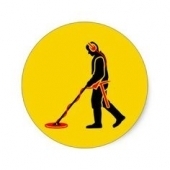





.thumb.jpg.d71314a45f3dc82bf75ac1b96e7e9201.jpg)
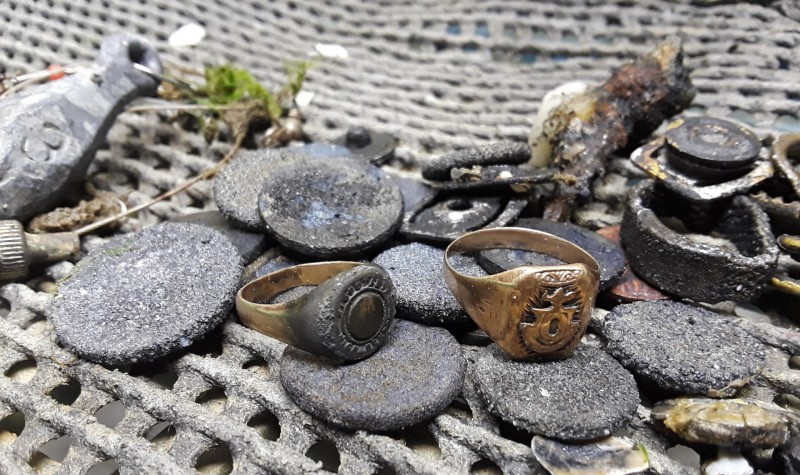
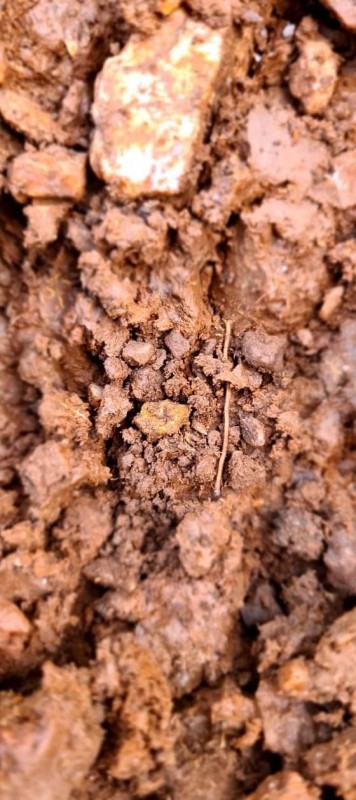
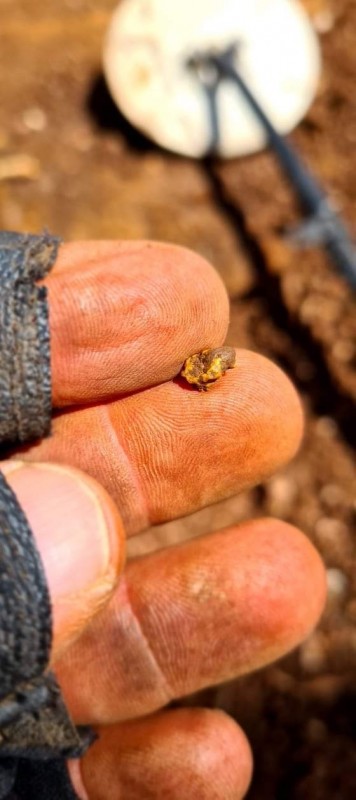
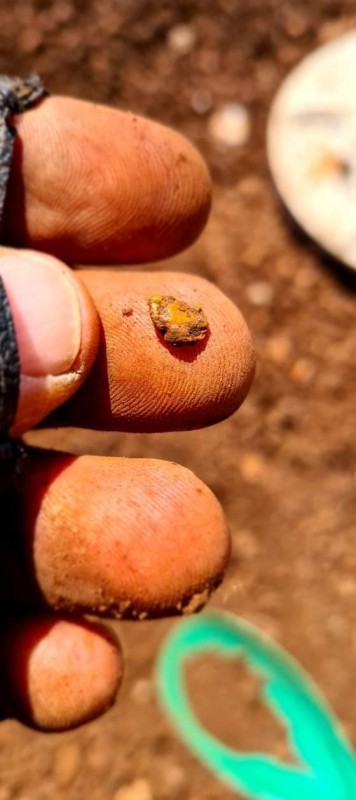
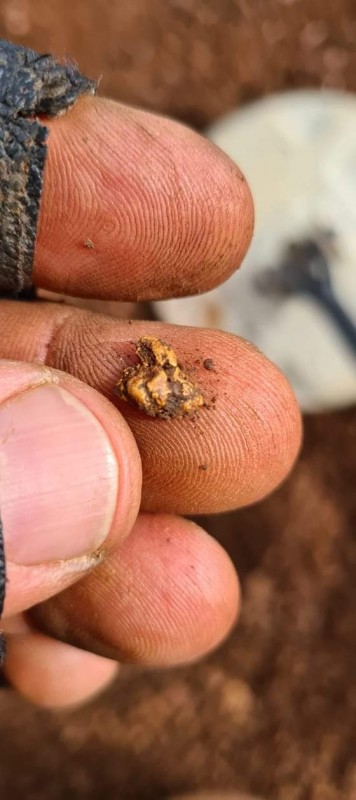
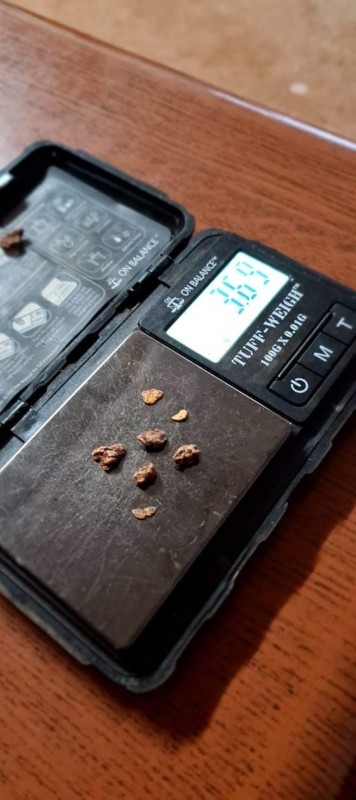
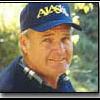

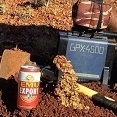
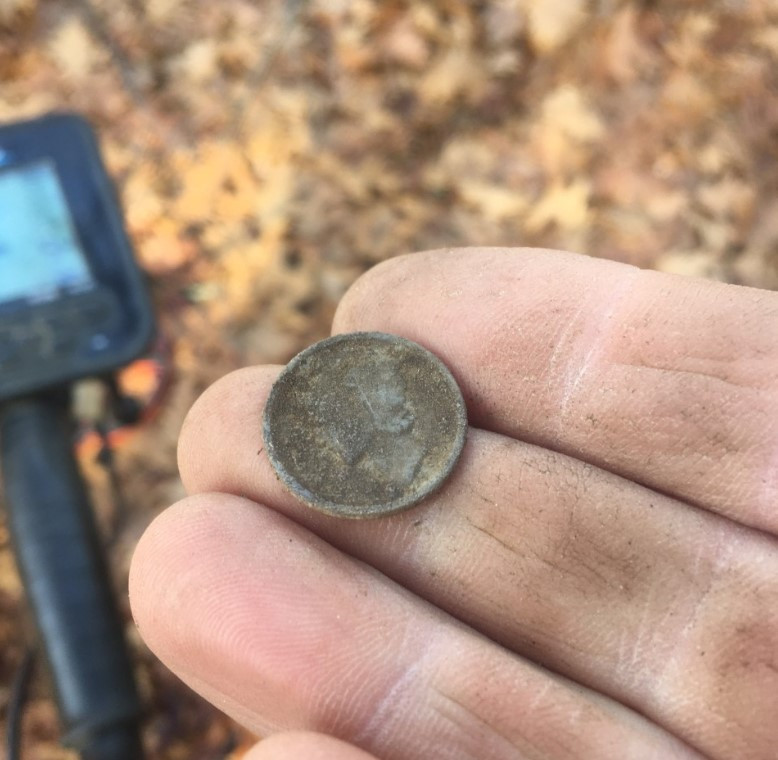




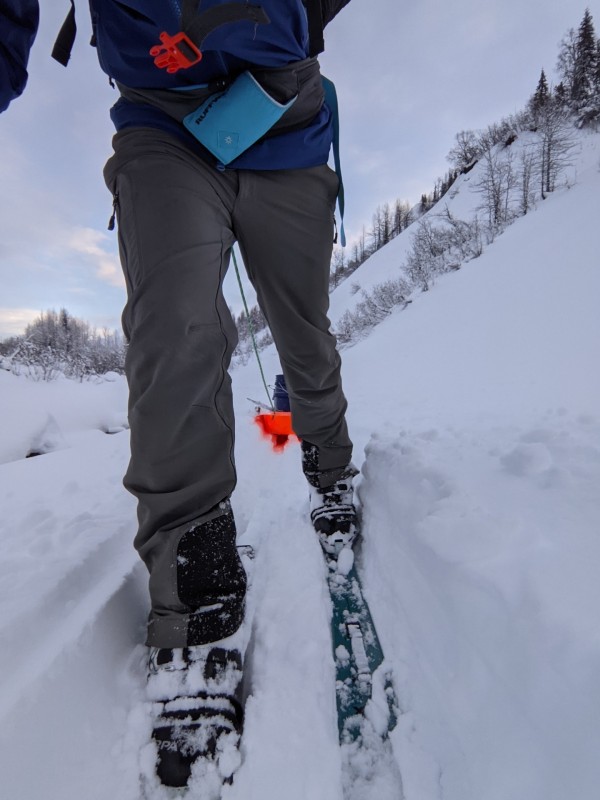
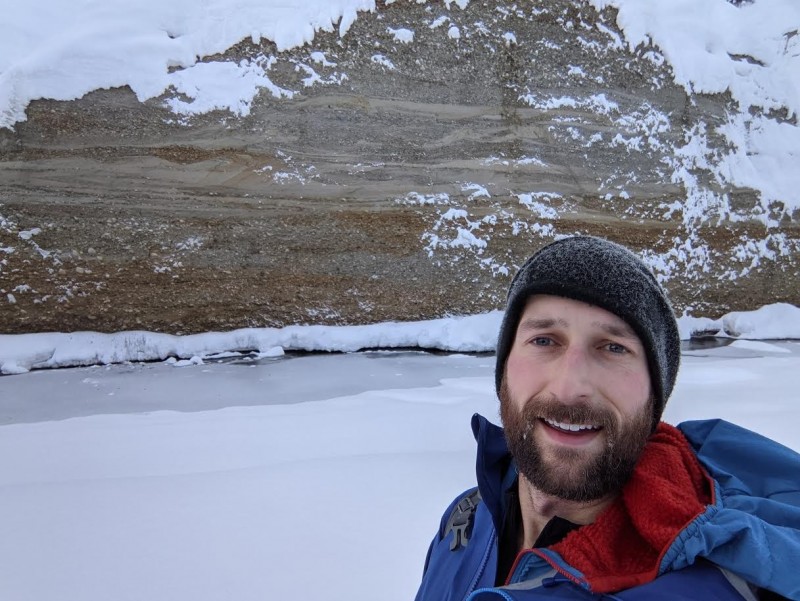
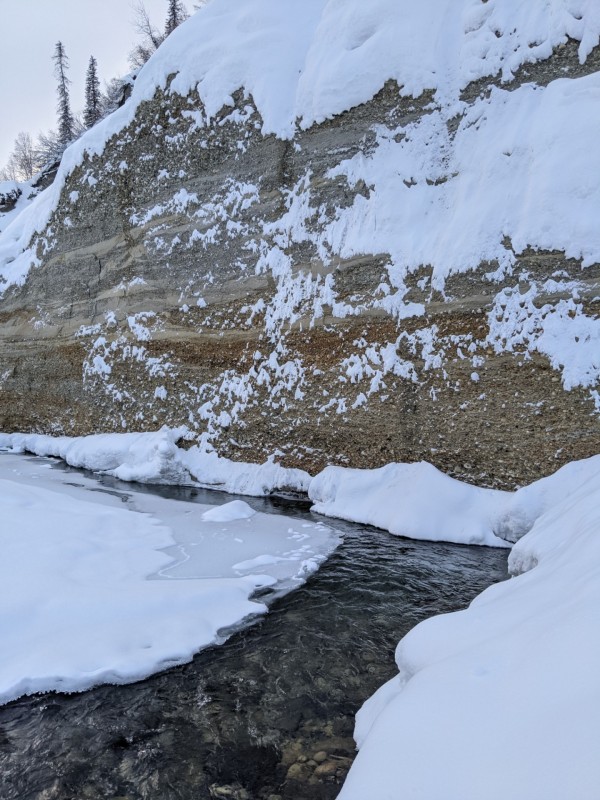
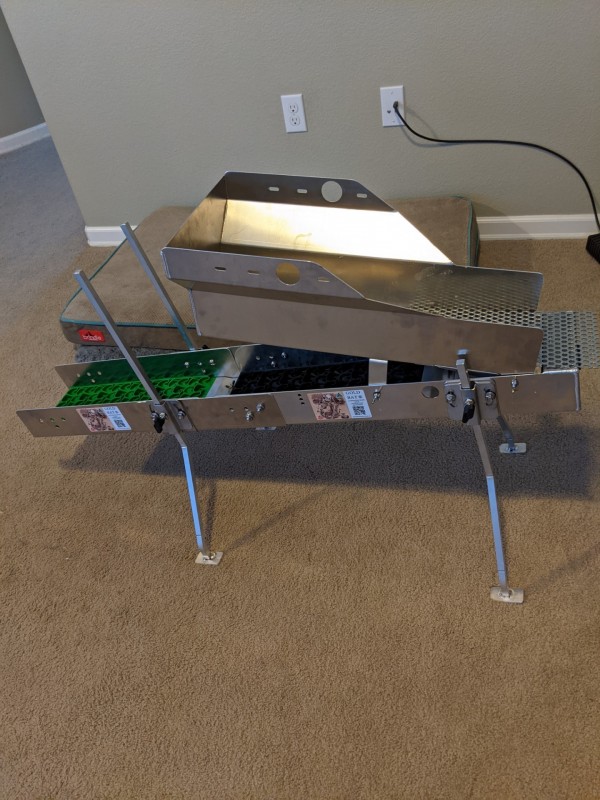
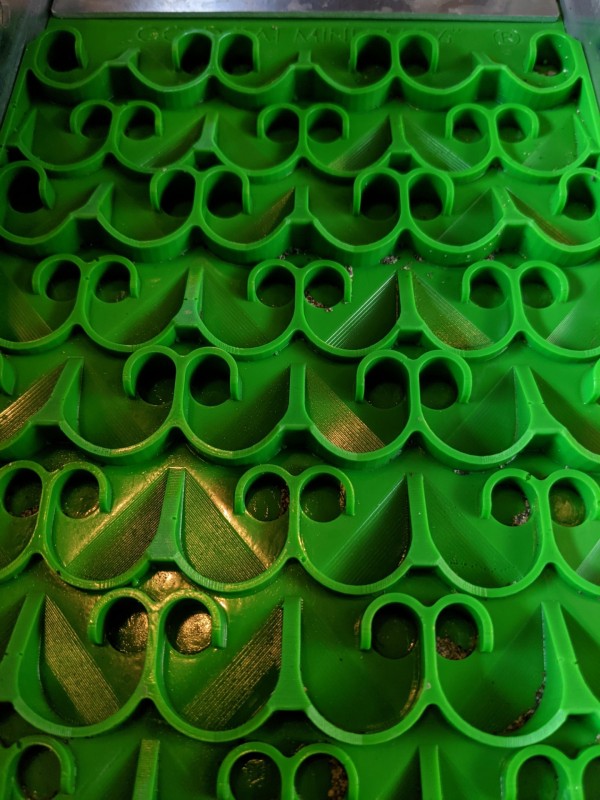
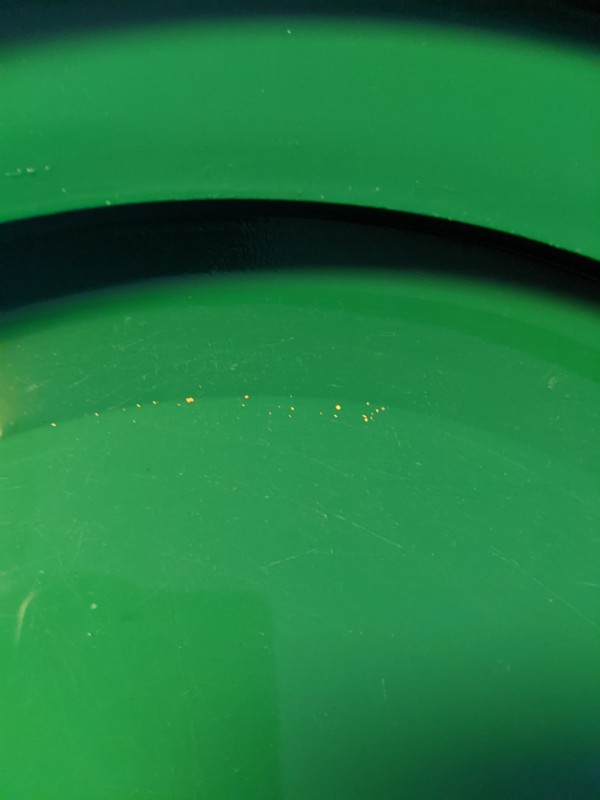
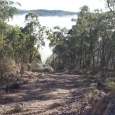

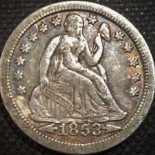

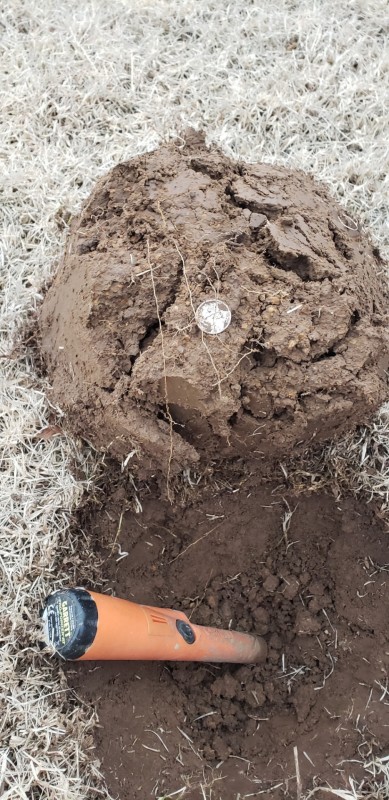

.thumb.jpg.95344db3aeef0a4c6c73420daa366191.jpg)
